Withlacoochee River System Update - 8/1/2022
Southwest Florida Water Management District sent this bulletin at 08/01/2022 05:46 PM EDTRiver Begins to Rise after July Rains
Rainfall:
- After a slow start to the wet season, rainfall amounts were higher in July.
- Overall, our region received about 7.6 inches of rain last month, close to the historical average (8.3 inches) for July.
- So far this summer (June – July) we’ve received about 12 inches of rain, much lower than last summer (22 inches) during those same months.
- A drier start to our rainy season this year has kept water levels in many areas from rising very quickly.
- But we’ve still got a couple months left in the wet season, and the peak of hurricane season isn’t until mid-September, so plenty of chances for high water this year.
- Region-wide aquifer levels are currently in the 65th percentile, lower than they were a year ago (80th percentile) because of less rainfall this summer.
- The map below shows rainfall totals for July.

Withlacoochee River (from the Green Swamp downstream past Hwy 200):
- Along the Withlacoochee River, water levels and flows increased in July.
- Higher rainfall in portions of the Green Swamp caused river levels to rise more significantly from Dade City to Ridge Manor (Hwy 50).
- Farther downstream, the river has seen only modest gains in recent weeks, due to less rainfall and the fact that the river’s floodplain is wider and requires more rain to fill adjacent wetlands.
- It also takes 3-4 weeks for rainfall in the Green Swamp to reach downstream portions of the river near Hwy 44 and 200.
- While water levels and flows did increase over the past month, they remain significantly lower than last year, a result of less overall rainfall so far this summer.
- Additional rainfall throughout the river’s watershed will continue to saturate soils and increase flows from the many tributaries that naturally drain into the Withlacoochee River.
- The table below compares current water levels and flows to what they were last month and last year.
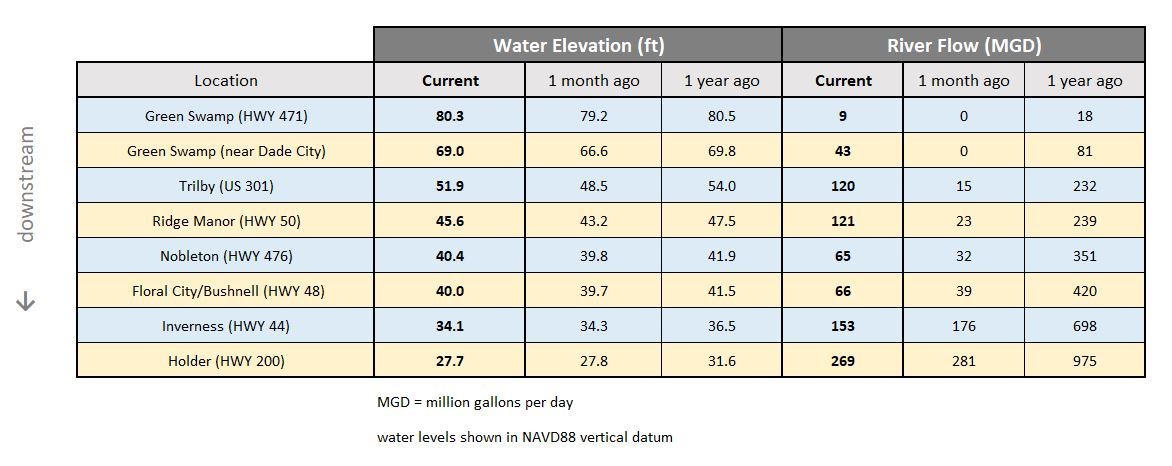
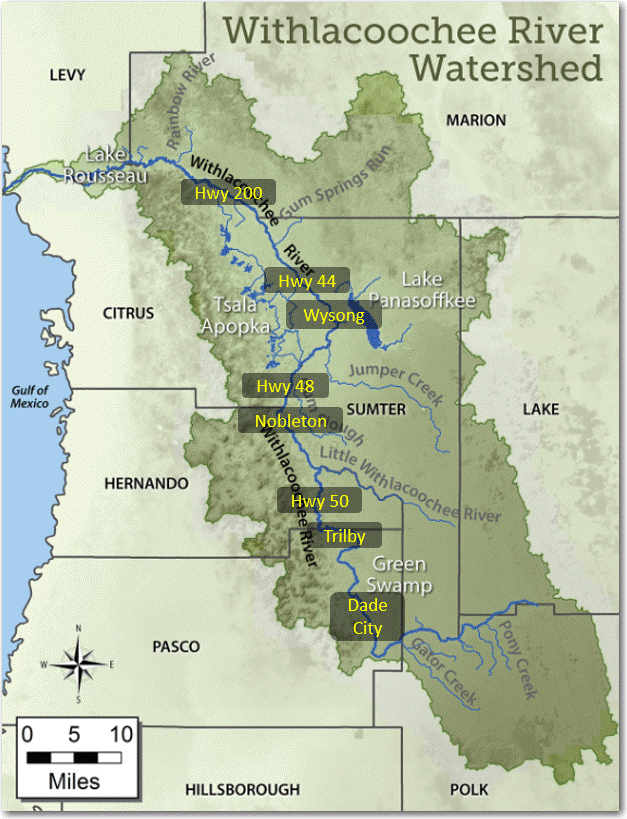
Withlacoochee River in the Green Swamp (July 2022) - notice the gator next to the old cypress stump

Tsala Apopka Chain of Lakes:
- Water levels throughout the lake chain rose in July, mostly due to rainfall directly on the lakes/canals/marshes.
- Additionally, the lakes have received inflow from the Withlacoochee River over the past few weeks.
- In early July, river levels rose from upstream rainfall, prompting the opening of several water control structures.
- Currently the Leslie Heifner, Floral City, Golf Course and Brogden Bridge structures are open, bringing water into all three pools of the Tsala Apopka lake chain.
- River inflows are minimal, however, compared to recent rainfall that has occurred directly on the lakes.
- The Inverness and Hernando Pools received twice as much rain as the Floral City Pool during the month of July.
- All three pools are still below their target levels for the summer but are expected to continue to rise as our wet season continues.
- The table below compares current lake levels to what they were last month and last year.

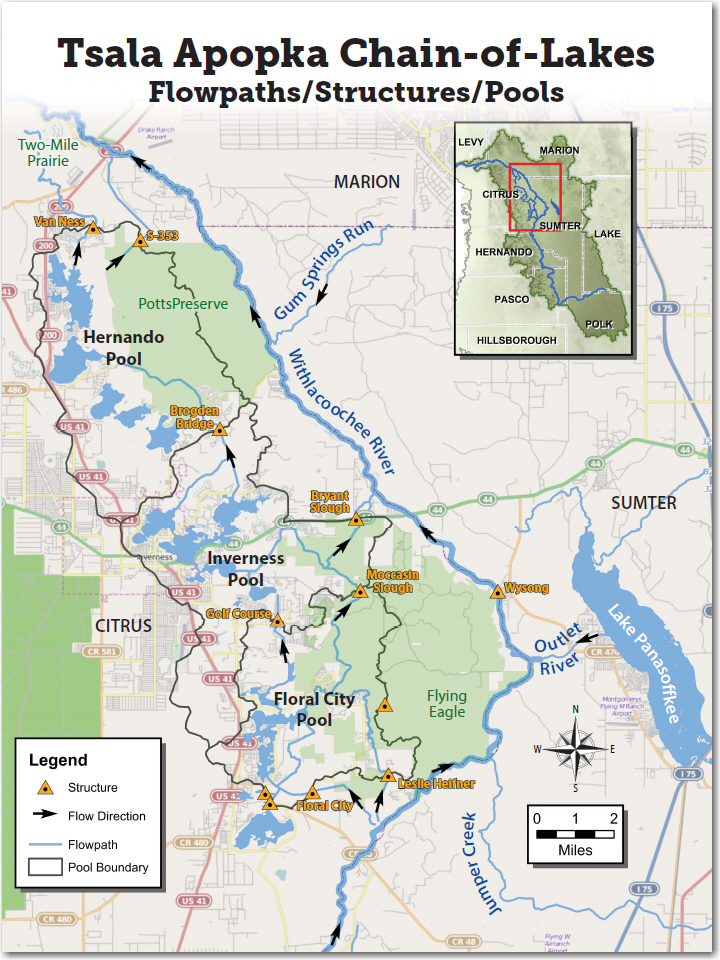
Floral City Structure fully opened (July 2022)
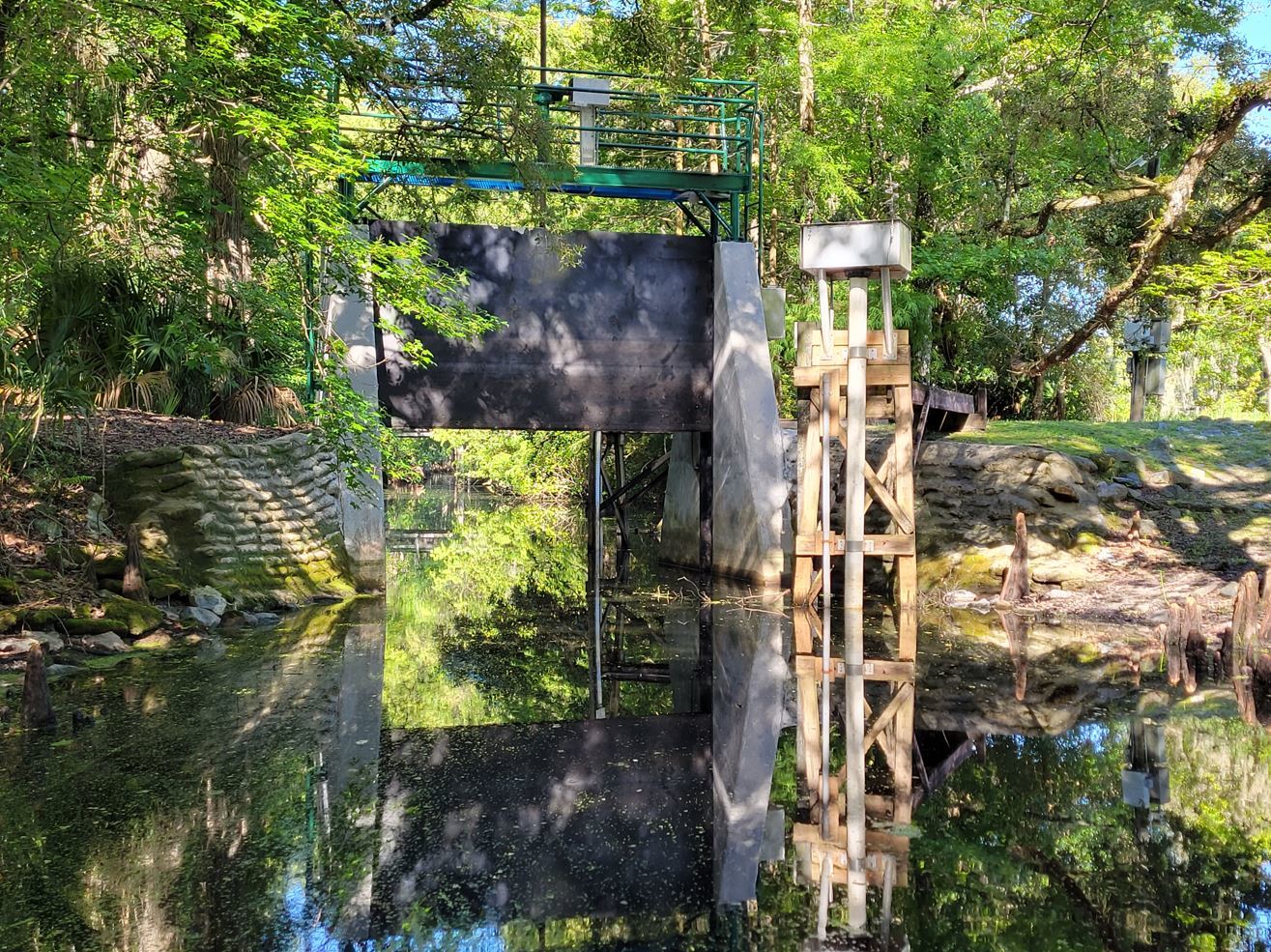
Lake Panasoffkee and Wysong:
- Last summer, Lake Panasoffkee rose 12 inches in July, a direct result of record high rainfall.
- This summer has been a different story.
- Lake levels held steady in July and are currently about 6 inches lower than they were on June 1st of this year.
- Lake Panasoffkee has not seen a significant rise in water levels yet this summer because the area has experienced less rainfall over the past couple months.
- Inflows (from Little Jones Creek and Shady Brook) are about the same as they were a month ago.
- Outflow from Lake Pan to the Withlacoochee River, which fell sharply in June, has held relatively constant in July.
- Downstream on the Withlacoochee River, the main gate of the Wysong Structure is currently fully raised, helping to conserve water upstream.
- A year ago, the Wysong gates were almost fully lowered because river flows were much higher at this time last summer.
- Currently, Lake Panasoffkee is 17 inches lower than it was a year ago, due to much less rainfall so far this summer.

Healthy eelgrass on the north end of Lake Panasoffkee (July 2022) - credit Robin Speidel
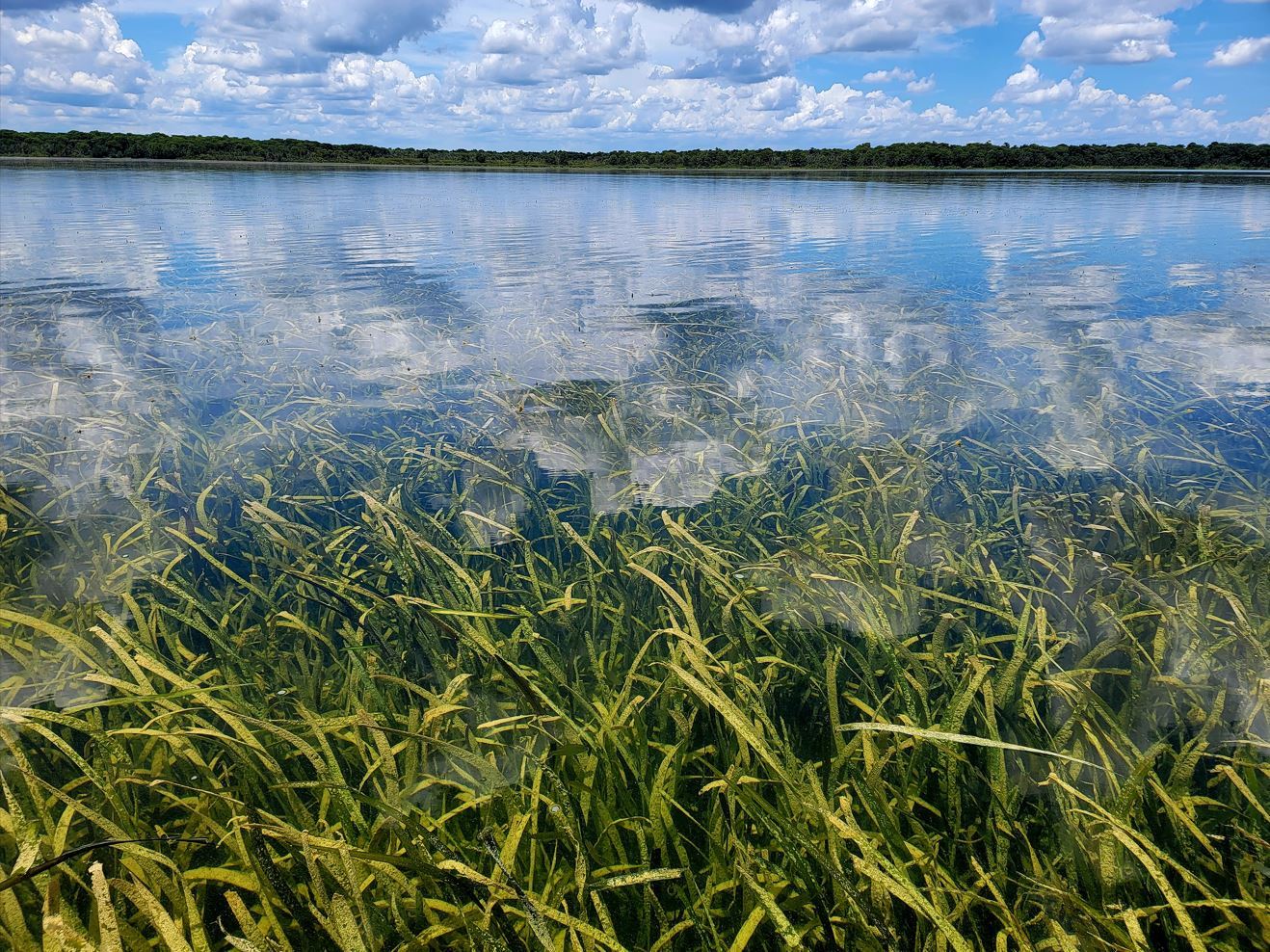
Lake Rousseau and the Lower Withlacoochee River (from Dunnellon to the Gulf of Mexico):
- Downstream from Dunnellon, the Withlacoochee River is influenced by water control structures on Lake Rousseau.
- Inflow to Lake Rousseau includes combined flows from the Withlacoochee and Rainbow Rivers.
- Withlacoochee River flow (which depends on rainfall and runoff from adjacent lands) decreased slightly over the past month.
- Flow in the Rainbow River (which reflects changes in aquifer levels) saw a slight increase.
- At this time last year, heavy rainfall in the region had increased river flows dramatically, but so far this summer rainfall has been much lower.
- Inflows to Lake Rousseau are currently about half of what they were a year ago.
- The Rainbow River is contributing 62% of the total flow entering Lake Rousseau.

- The primary outlet from Lake Rousseau is through the Inglis Bypass Spillway to the Lower Withlacoochee River (see maps below).
- All water exiting Lake Rousseau is currently able to pass downstream through the Inglis Bypass Spillway to the Lower Withlacoochee River.
- This structure is currently flowing at 60% of its capacity, meaning it can handle up to another 380 million gallons of water per day.
- That additional water is simply not available right now since upstream flows have not significantly increased yet this summer.
- The Inglis Main Dam (which connects to the Barge Canal) remains closed.
- After summer rains bring increased flow to the Withlacoochee River, the Bypass Spillway will again reach its capacity and the Inglis Main Dam will likely be re-opened.
- Freshwater flow to the tidally influenced Lower Withlacoochee River is 36% lower than it was a year ago because of less rainfall upstream.

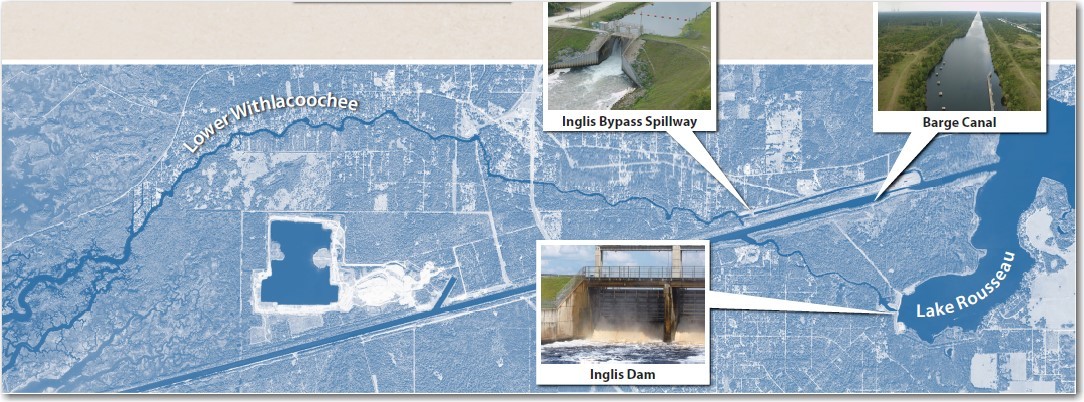
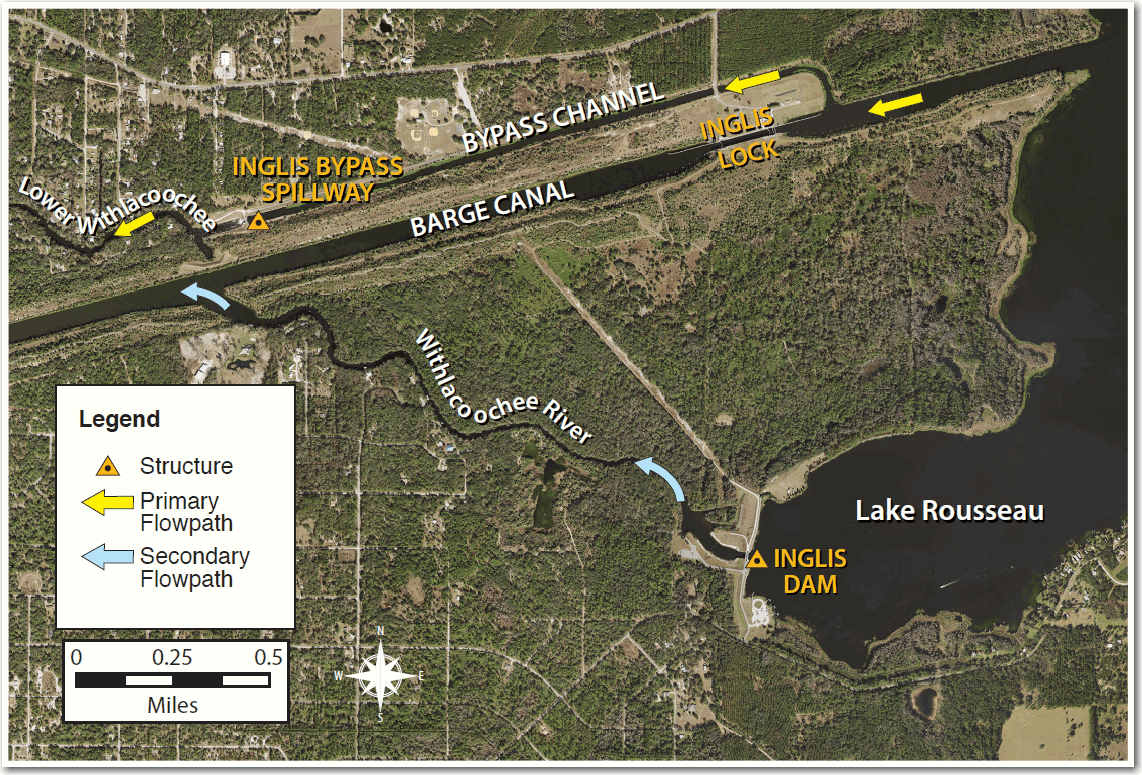
Have a wonderful week!
Mark
Mark Fulkerson, Ph.D., P.E.
Chief Professional Engineer
Water Resources Bureau
Southwest Florida Water Management District
(352) 796-7211, ext. 4410
(800) 423-1476 (FL only)
(352) 279-4493 (cell)

